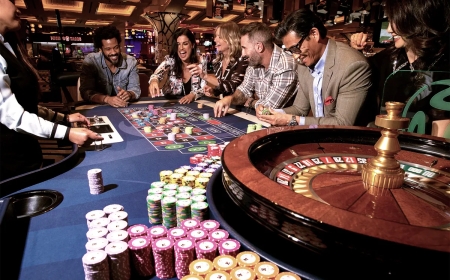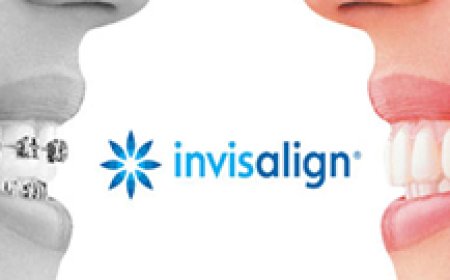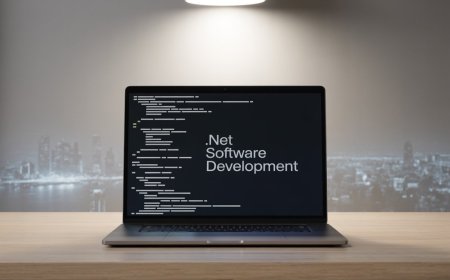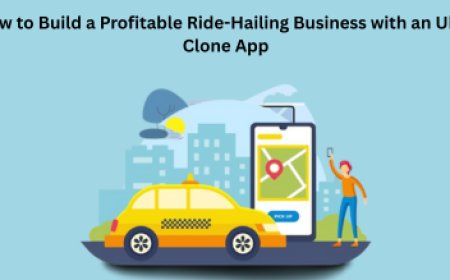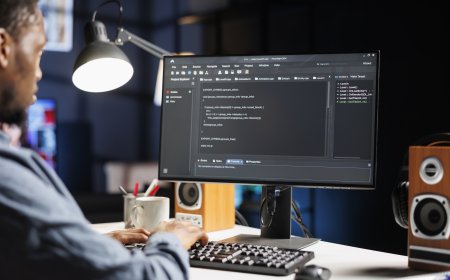Typography Trends vs. Color Trends 2026: What Defines the Future of UI?
Should you prioritize typography or colors for web development? Check this blog on typography trends vs. color trends 2026 for an insight into the future of UI.

Finished building your business website? Great news! After all, your customers will interact with you there. And thus, you should ensure that your business site looks good and performs well. Why so? Read on!
57% of users won’t recommend a business with a poorly designed website. That’s why staying up to date with the latest trends has become non-negotiable, especially now that the debate on typography trends vs color trends 2026 is already getting a lot of buzz.
Typography trends are pretty fast-moving, like the color trends. As we head toward the year 2026, it's about time we refresh our strategies and start embracing them. But what should take priority in the future of UI/UX? Let’s break down the future UX and UI design trends in this blog post and draw a quick comparison between them.
How is Typography Reshaping the Latest UI/UX Design Trends?
Typography will play a major role in the future of UI/UX design than most people realize. As design trends evolve each day, “type” has gone beyond choosing good-looking fonts. In 2026, typography will become a core part of UX design, redefining how users read, navigate, and experience a product. Let’s have a look at the futuristic typography styles for future UI:
1. AI-Personalized, Adaptive Typography
-
Enhances readability for users with visual strain or accessibility needs.
-
Can adapt to environmental factors (low light = higher contrast).
-
Adjusts size, weight, or spacing as per user preferences.
2. Mixed-Weight Typography for Stronger Hierarchy
-
Maintains a hierarchy even in minimal layouts.
-
Combines bold headings with regular or medium body text.
-
Improves readability in dark mode or low contrast modes with a clear visual pathway.
3. Variable Fonts are Setting the New Standard
-
Loads faster and reduces the number of font files needed.
-
Improves consistency across responsive layouts.
-
Offers flexible weight, width, and optical sizing.
4. Fluid and Responsive Typography Systems
-
Scales automatically across different screen sizes.
-
Ensures consistent readability across all devices.
-
Prevents site content from appearing too small or too big.
5. Clean, Ultra-Reusable UI Fonts are Taking Priority
-
Focuses on legibility in small sizes and high-density layouts.
-
Reduces visual noise and allows users to scan content faster.
-
Combines the Humanist and Geometric Sans-Serif fonts.
6. Minimalist, Function-First Typography
-
Prioritizes speed and clarity over decorative design elements.
-
Reduces cognitive load and keeps interfaces clean.
-
Promotes simple, calming layouts with a modern and trustworthy appearance.
What’s New in Color Psychology for UI/UX Design in 2026?
No matter what your site is about, choosing the right color is a must. Our eyes are drawn to color. Data shows 21% of users leave a site with “outlandish” colors. Thus, you must ensure that your site is up to date with the latest color trends. Color psychology is becoming even more crucial in UI/UX as we move into 2026. Let’s discuss the trending color palettes for websites and apps:
1. Verdant Green and Eco-Inspired Tones
-
Offers a fresh, balanced, and trustworthy feeling.
-
Reflects sustainability and nature-focused branding.
-
Promotes strong emotional association with growth and clarity.
2. High-Visibility Accent Yellows
-
Adds energy without dominating the interface.
-
Stand out well against neutral and minimal color palettes.
-
Brings warmth and optimism to digital experiences.
3. Warm Minimal Neutrals (Cream, Mocha Mousse, and Beige)
-
Supports high readability and balanced contrast/
-
Creates calm, low-distraction interfaces.
-
Evokes a natural yet modern feeling across all industries.
4. Digital Lavender and Muted Futuristic Pastels
-
Promotes a futuristic look without overwhelming the website UI.
-
Works well for promoting digital tools and AI-driven products.
-
Brings a soft yet tech-inspired look with modern and soothing hues.
5. Crisp White and Ultra-Clean Light Bases
-
Makes typography and icons more prominent.
-
Works well in both light mode and hybrid UI environments.
-
Enhances spacing, clarity, and user focus.
6. Muted Rose and Soft Emotional Accents
-
Makes brands feel more human and approachable.
-
Adds warmth without making it overly feminine.
-
Creates a welcoming and emotionally intelligent UI.
Typography vs Color in UI Design: What Should You Prioritize in 2026?
Choosing between typography and colors isn’t easy, given that they both are pivotal to shaping your UI in different ways. Let’s have a quick breakdown of what to prioritize in 2026 web design and why it matters in the table below:
|
Design Aspect |
Typography |
Color |
|
Readability |
Defines how clearly users read and scan content |
Promotes clarity but can’t replace legible type |
|
Accessibility |
Controls legibility, hierarchy, and spacing |
Helps with contrast, but less critical compared to typography |
|
User Guidance |
Guides flow through size, weight, and structure |
Highlights key elements of a site and user actions |
|
Brand Identity |
Establishes brand voice and tone |
Creates instant emotional and visual recognition |
|
Emotional Impact |
Offers subtle influence through tone and style |
Strong influence; sets the mood and perception |
|
Mobile Experience |
Pivotal for small screens |
Secondary but useful for emphasis |
|
Future-Proofing |
Evolves through adaptive and variable types |
Evolves through calming, nature-inspired pallets |
|
CTAs / Conversions |
Helps with text clarity and trust |
Drives attention through vibrancy and contrast |
There’s no verdict on this comparison, as typography and color both are essential for modern UI/UX design. However, what should be your top priority will depend on your project and user needs. Still feel confused? Working with an expert web design firm like Unified Infotech might be helpful.
Typography vs. Colors: What Matters the Most in 2026 UI/UX?
Looking at the typography trends vs color trends 2026, it’s clear that there is nothing to prioritize more. They both play an equally important role in defining the future of UI/UX design. Typography sets the foundation for structure and readability, while color influences perception, emotion, and user engagement.
Rather than choosing one over the other, modern web interfaces thrive when both these elements work together. How? By guiding experiences with types and enhancing the mood with colors. In 2026, the domain of web development will ask designers to balance clear typography and thoughtful color palettes to create interfaces that feel accessible, intuitive, and modern.
We hope this blog post will give you an in-depth insight into this










